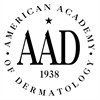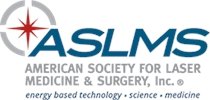Home »
Melasma Treatment
Melasma is a common skin condition distinguished by pigmented discoloration of the face. Typically, melasma is seen as irregular dark brown patches on the cheeks, forehead, chin, or bridge of the nose. Melasma has multiple factors and causes, including genetics, hormones, and external factors. Melasma is more common in men than in women. While melasma does...
Cherry Angiomas
What are Cherry Angiomas? Cherry angiomas are benign vascular growths which typically develop in lighter skin individuals during the 30's and 40s. Cherry red in color, they represent small epidermal capillary growths and can be found on any part of the body with a predilection for the trunk and proximal extremities. As a benign entity,...
Dermatosis Papulosa Nigra
What is Dermatosis Papulosa Nigra? Dermatosis Papulosa Nigra, also known as 'DPN', is a genetically mediated condition resulting in the development of small benign pigmented growths, typically around the eyes. It primarily affects patients with darker skin tones, and the lesions are often mistaken for skin tags or moles, however DPN is its own distinct...
Wart Removal
Two main types of warts affect human skin. Human Papilloma Virus (HPV) accounts for the majority of wart infections. There are more than 70 types of HPV and they can occur anywhere on the body. Warts are named by their location (i.e. “plantar” is the bottom of the foot, and “genital” is on or near...
Sun Damage Treatment
As we age, signs of sun related damage to our skin become more visible and apparent. Over time sun damage can lead to brown spots, fine lines and wrinkles, and growths that are in visible, cosmetically sensitive areas. The Center for Laser Surgery specializes in treating the cosmetic effects of sun damage with a wide variety...
Skin Cancer Screening
Board Certified Dermatologists are highly trained experts in the diagnosis and treatment of skin cancer. Through years of training and experience, dermatologists are able to differentiate many forms of skin cancer from non-cancerous lesions. Over the past decade, new instruments and techniques have been developed, such as dermoscopy, which aid dermatologists in the diagnosis and exclusion...
Rosacea Treatment
What is Rosacea? Rosacea is characterized by persistent facial redness, associated with intermittent flushing and blushing and development of facial telangiectasia (spider veins), normally focused on the central face and cheeks. Rosacea has traditionally been treated with continuous oral and topical medications with variable success. We also offer laser rosacea treatment which is often far more effective...
Psoriasis Treatment
Suffering from Psoriasis in Washington, DC? We are recognized experts for the treatment of psoriasis in Washington, DC. Psoriasis is a genetically determined, chronic inflammatory disease of the skin marked by thickened, scaly, dry plaques in affected areas. Psoriasis comes in many forms, such as palmoplantar psoriasis (hands/feet), scalp psoriasis, guttate psoriasis, and the classic...
Nevus of Ota
Nevus of Ota, or blue-black facial birthmarks, are caused by an abnormal collection of melanocytes (pigment producing cells) in the upper dermis of the skin. This collection of pigment producing cells essentially creates a natural tattoo causing a blue, green, or black appearance to the overlying skin Nevus of Ota birthmarks are commonly found on...
Moles
Almost everyone has pigmented spots on their skin. Most adults have approximately twenty-five moles – some have none and others have hundreds. Moles generally appear between childhood and the mid-twenties. Pigmented spots or moles present at birth or in the first year of life are called “congenital.” They seem to have a higher chance of...
Acne
Acne is a very common skin condition which is normally first seen around the time of puberty. However, acne can affect patients at any age, from infancy to adulthood. Despite great variability in the time of onset and appearance of acne, it is essentially a genetically determined and hormonal driven disease. Luckily, with the correct...
Hyperhidrosis Treatment
Hyperhidrosis is the medical term for excessive sweating. Hyperhidrosis can be focal (armpits, palms, soles) or generalized (whole body). This can affect daily life in an adverse manner. Luckily there are hyperhidrosis treatments aimed at reducing sweating to a more normal level. Hyperhidrosis Treatment Focal hyperhidrosis of the armpits, palms, or soles is typically treated...
Infantile Hemangiomas
Infantile Hemangiomas form from a buildup of blood vessels in the skin that results in the formation of a cherry red lesion of the skin. Hemangiomas are common in infants and young children, and typically do not pose any medical risk unless located in sensitive areas, such as around the eyes, nose, or mouth. Infantile...
Facial Blood Vessel Treatment
A common result of both intrinsic aging and photoaging (sun damage), both red and blue facial blood vessels can be effectively treated with our array of vascular lasers with little to no downtime. Red Facial Blood Vessels (Facial Telangiectasia) Red facial blood vessels, referred to as telangiectasia, commonly develop on the nose, cheeks, and chin,...
Dishydrotic Eczema
The classical form of this is the sudden appearance of water blisters along the fingers and/or the palms and the soles. These blisters are quite itchy at first and then flatten out and become scaly. This disease tends to be recurrent in individuals who are susceptible. Stress is often an exacerbating factor. Eczema may also...
Contact Dermatitis
Allergic Contact Dermatitis The most common type of contact dermatitis is a reaction to poison ivy. If you take a walk in the woods, brush against a plant, and note the appearance of blisters on the skin two days later, the diagnosis of allergic contact reaction to poison ivy is obvious. However, reactions to poison...
Cellulite
What Is Cellulite? Cellulite, or dimpling of the skin surface due to underlying fat, can be a significant concern for many patients. Cellulite is not caused specifically by the presence of fat, but the fibrous septae that run within fat, providing structure to areas of fat and helping to anchor more superficial areas of fat...
Cafe Au Lait Birthmark
Café Au Lait birthmarks are superficial pigmented birthmarks caused by excess melanin deposits in the epidermis. These birthmarks respond very favorably to treatment with Q-Switched Ruby, Q-Switch Alexandrite, and Q-Switch or Picosecond Nd:YAG lasers. Multiple treatments are generally required and there is a risk of recurrence. For more information on our birthmark removal program, please visit...
Eczema (Atopic Dermatitis)
This is a very common and misunderstood disease. It has been called “the itch that scratches”. In simple terms, it is hyperreactivity of the skin's very own immune system to both exogenous and endogenous allergens, leading to itchy, dry, irritated skin on affected areas. Over the past decade, our understanding of the pathogenesis of eczema...
Age Spots & Brown Spots
Age spots and brown spots are commonly seen on the skin as it ages, often as a result of sun damage. Also known as sun spots, these dark spots on the skin can appear anywhere on the body but are most commonly seen on the face and hands. The Center for Laser Surgery offers effective...





